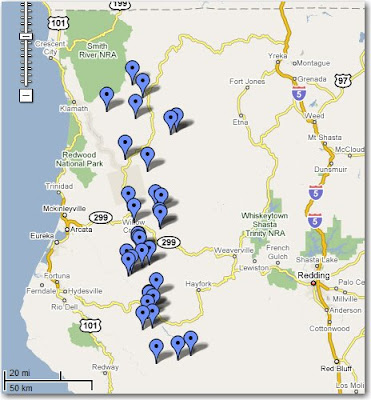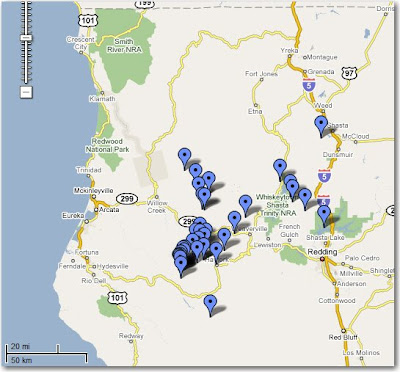On May 29 we reported on the members of the Flathead Hot Shots that were struck by lightning while working on a prescribed fire. The Hungry Horse news interviewed them:
From left, squad leader Bert Smith, Beau Morin, Ichiro Stewart and Heather McEvoy. Chris Peterson photo
By CHRIS PETERSON/Hungry Horse News
Heather McEvoy remembers a flash of light off her shoulder. She remembers screaming for a minute. Somebody get this chainsaw off me. Somebody get my shoes off. Please get my shoes off. My feet. My feet are on fire.
Getting up to help her was co-worker Beau Morin. He, too, got hit by the flash light. He, too, got knocked to the ground. But it wasn’t as bad. He was sort of paralyzed on his left side. Body parts were tingling and weird feeling. But he had to help McEvoy. She couldn’t feel anything from the waist down. Except for that fire in her feet. Somebody put that fire out. Get this chainsaw off my chest.
All the while hail is pounding down on top of them. And there’s more lightning and more thunder in the skies. This is not a good day in May. May 29. McEvoy and Morin are members of the Flathead Hot Shot crew — an elite group of firefighters trained to work in the woods no matter what the conditions might be.
The crew was working the line of a prescribed burn that had been set the day before. Doing mop-up work. Morin was with firefighter Beau Richardson. McEvoy was teamed up with Ichiro Stewart.
They were on the line when thunderstorms started to rumble in. At first, the idea was just to hunker down, wait out the rain. But then it started to hail. So they decided to head to the “buggies” — Forest Service speak for the rigs that they ride in from fire to fire. They look like vans, only on steroids. The two groups met about a quarter mile from the buggies in a meadowy area. Stewart and Richardson were about 15 feet in front of McEvoy and Morin. Then the lightning struck. “I just had bright light on my shoulder,” McEvoy recalled during an interview with the team last week. She figured she was dead. “I thought those guys are going to have to do CPR on me.”
Stewart is an emergency medical technician. He heard the boom, turned around and saw burning debris falling from a tree. He went to McEvoy’s aid.
Morin’s assessment was more blunt. “It shocked me pretty good,” he said. But still he got up and despite the pain in his body, began helping McEvoy, getting the gear off her chest, helping her as best as he could. McEvoy would have to be carried out, even though she was starting to regain feeling in her lower extremities. Stewart radioed for two ambulances, and then carried her out.
THE TEAM PULLED together, like they’re trained to do. They credit their experience and training toward what could have been a terrible experience into a well-run rescue. Stewart was worried about hypothermia with McEvoy and it was clear Morin was hurt as well. “Our response was rapid,” Stewart recalled.
The radio for help went up through the chain of command. Ambulances were en route. ALERT was in the air. Bert Smith is the squad leader for the Hot Shots. “We operate in a high stress environment,” he noted. “But (this group) is easy to manage when you’re surrounded by leaders.”
Combined, they have years of experience fighting fires in awful conditions throughout the U.S. McEvoy, of Whitefish, has been a Flathead Hot Shot for three years, Morin of Kalispell nine years; Stewart also has several years as does Richardson. They all said Morin went above and beyond the call of duty, rushing to McEvoy’s side when he was injured himself.
He shrugs it off. “For some reason, I wasn’t too worried about it,” he said. In a little less than a half hour, the team was out of the woods and McEvoy and Morin were en route to the hospital. McEvoy says she has no long-term ill effects. She has some purple discoloration on her foot and was going back to work. Morin said he gets confused once in awhile. “But I think that’s normal,” he says with a smile.
Photo courtesy of Hungry Horse News





 Any other situations where you tempted fate?
Any other situations where you tempted fate?


